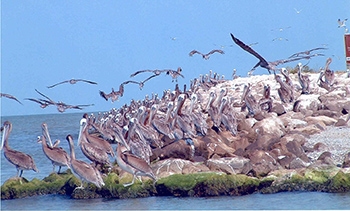The U.S. Army Corps of Engineers (USACE) Galveston District plays a pivotal role in managing and enhancing the Texas coast, which encompasses 50,000 square miles, including 1,000+ miles of channels and 700 miles of coastline. With a district boundary stretching from Louisiana to Mexico, the Galveston District oversees the operations of 28 ports, 16 Congressional districts, and 48 Texas counties, including 18 coastal counties and 9 watersheds. This vast network supports vital navigation systems for both deep and shallow draft ports, driving regional and national economic growth while maintaining ecological health and community resilience.
Established as an Engineering With Nature (EWN) Proving Ground in October 2014, the Galveston District collaborates with the Engineer Research and Development Center (ERDC) and a diverse range of stakeholders to develop innovative, nature-based solutions. These efforts aim to balance infrastructure needs with environmental stewardship, ensuring that Texas’s coast remains resilient against storm surges and coastal erosion, while supporting sustainable ecosystems and communities.
Key initiatives include the beneficial use of dredged material for habitat restoration, such as the successful projects at Pierce Marsh and King Fisher Beach. These efforts transform maintenance dredging material into a valuable resource, restoring marshes, replenishing beaches, and creating habitats that bolster biodiversity and protect coastal infrastructure. By leveraging regional sediment management, conservation planning, and strategic partnerships with groups like the Galveston Bay Foundation, the district advances a shared vision of a thriving Texas coast.
Looking to the future, the district continues to explore how EWN principles can be employed to sustain critical coastal land features, enhance multiple lines of defense for vulnerable communities, and repurpose dredged material for ecosystem restoration and flood risk management. These efforts, combined with evolving technologies and science, position the Galveston District to lead in the sustainable management of the Texas coast.
Coastal Texas Protection and Restoration Feasibility Study
The themes of Coastal Resilience; Natural and Nature-Based Features; and EWN are being explored to support the USACE Galveston District integrated coastal protection and restoration.



